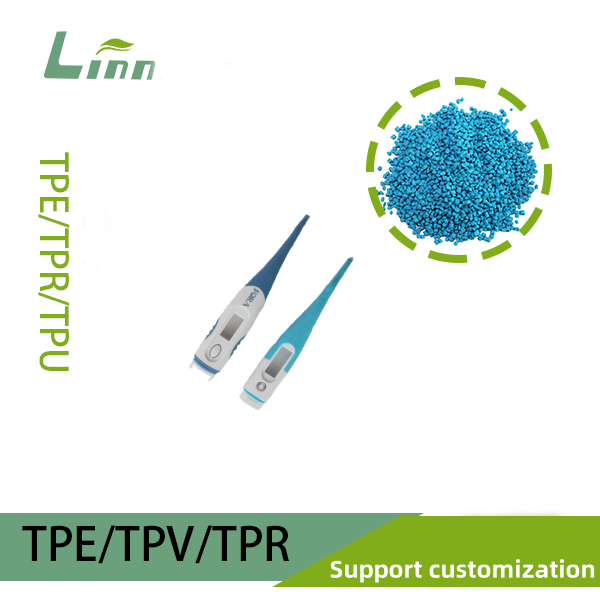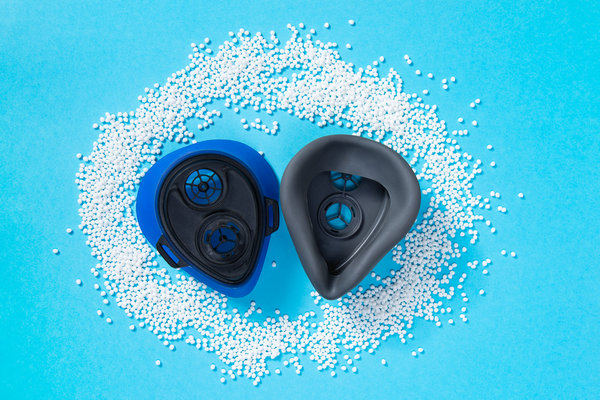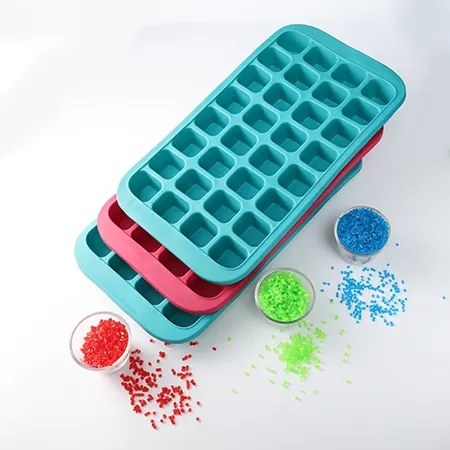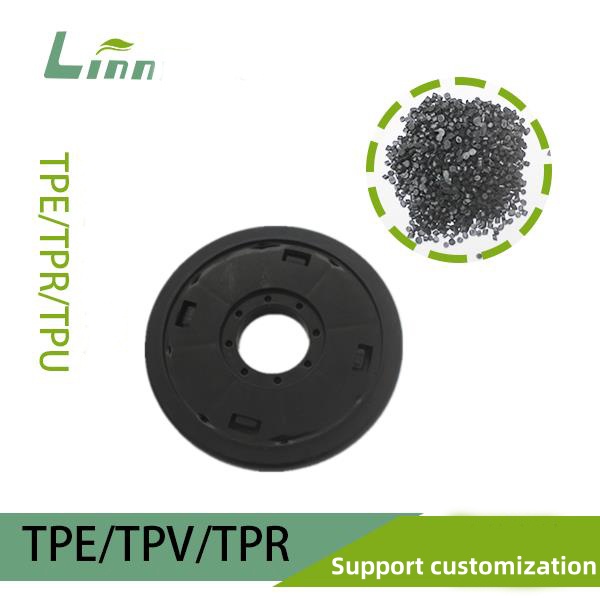As a plastics engineer with over a decade of experience in compounding and processing thermoplastic elastomers (TPE), I’ve spent countless hours on factory floors, tweaking formulations and troubleshooting production issues. One challenge that keeps popping up, especially for manufacturers new to TPE, is why their TPE material hardens quickly—sometimes even before it’s molded or during storage. I ran into this issue early in my career while working on a TPE grip for a consumer product. The material stiffened within days, ruining the batch and frustrating the client. That experience pushed me to dive deep into the causes and solutions. In this article, I’ll share my insights from years of hands-on work to explain why TPE hardens quickly and how to prevent it, so you can keep your production smooth and your products flexible.

What Does It Mean When TPE Hardens Quickly?
When we say TPE hardens quickly, we’re typically talking about the material losing its flexibility, becoming stiff, or increasing in Shore hardness (a measure of material hardness) faster than expected. This can happen during processing (e.g., in the barrel or mold), during storage of raw pellets, or even in the finished product over time. For TPEs, which are prized for their rubber-like elasticity, this hardening can lead to brittle parts, poor performance, or customer complaints.
My first encounter with this issue was in a factory producing TPE shoe soles. The material felt soft during molding but hardened within a week, making the soles feel like plastic rather than rubber. After some investigation, I pinpointed a mix of material, processing, and environmental factors. Let’s break down the common causes and how to address them.
Common Causes of TPE Hardening Quickly
Based on my experience troubleshooting TPE production lines, here are the primary reasons why TPE material hardens quickly, along with practical solutions I’ve tested in real-world settings.
1. Improper Material Formulation
The formulation of TPE—its blend of polymers, plasticizers, fillers, and stabilizers—plays a huge role in its flexibility and stability. A poorly designed formulation can cause the material to harden prematurely.
Causes:
Low plasticizer content: Plasticizers (e.g., oils) give TPE its softness. If the content is too low or the wrong type is used, the material can feel stiff.
Plasticizer migration: Over time, plasticizers can leach out, especially in high-humidity or high-temperature environments, causing hardening.
Incompatible additives: Fillers like calcium carbonate or low-quality stabilizers can reduce elasticity if not properly balanced.
Polymer degradation: The base polymer (e.g., SEBS, TPU) may degrade if the formulation isn’t stabilized for processing or end-use conditions.
Fixes:
Work with your supplier to select a TPE with adequate plasticizer content for your application. For a TPE grip project, I switched to a high-oil SEBS, which stayed soft longer.
Use non-migrating plasticizers or high-molecular-weight oils to reduce leaching. A medical TPE project benefited from this switch, maintaining flexibility for months.
Optimize filler levels (e.g., keep calcium carbonate below 20%) and use high-quality stabilizers. I once reformulated a TPE with better UV stabilizers, preventing hardening in outdoor use.
Test the formulation for stability under expected conditions (e.g., heat, UV). I run accelerated aging tests to catch issues early.
In a factory producing TPE seals, the material hardened within weeks due to low plasticizer content. Switching to a higher-oil formulation and adding a stabilizer fixed the issue.

2. Processing-Induced Degradation
During injection molding or extrusion, TPE is subjected to high temperatures and shear forces, which can degrade the material and cause it to harden.
Causes:
Overheating: Processing above the recommended temperature (e.g., >250°C for SEBS) breaks down polymer chains, reducing elasticity.
Excessive shear: High screw speeds or tight nozzles create shear stress, degrading the material.
Long residence time: Material lingering in the barrel or hot runners can overheat and harden.
Moisture content: Wet TPE pellets can hydrolyze, leading to brittleness.
Fixes:
Stick to the recommended melt temperature (check the material’s technical data sheet, typically 180-220°C for TPEs). I always verify settings before a run.
Reduce screw speed and use a low-shear screw design. In a TPE tubing project, lowering the speed by 15% preserved softness.
Optimize cycle times to minimize residence time. A properly sized machine helped a client avoid hardening in a TPE cable run.
Pre-dry TPE pellets at 70-90°C for 2-3 hours to remove moisture. This eliminated brittleness in a TPE toy project.
I once troubleshooted a TPE handle that hardened during molding. The barrel was 30°C too hot, and the material was degrading. Adjusting the temperature and drying the pellets solved it.
3. Environmental Exposure
TPE parts or pellets can harden when exposed to environmental factors like heat, UV light, or humidity, especially during storage or in end-use applications.
Causes:
UV exposure: Prolonged sunlight degrades the polymer and plasticizers, causing stiffening.
High temperatures: Storage or use above 40°C accelerates plasticizer migration or polymer breakdown.
Humidity: Moisture can hydrolyze certain TPEs (e.g., TPU), reducing flexibility.
Oxidation: Exposure to air can degrade the polymer over time, especially without stabilizers.
Fixes:
Use UV-resistant TPE grades with stabilizers like HALS (hindered amine light stabilizers). I switched a client’s outdoor TPE mat to a UV-stabilized grade, preventing hardening.
Store pellets and parts in a cool, dry environment (below 30°C, <50% humidity). I use sealed bags with desiccants for pellet storage.
Select hydrolysis-resistant TPEs for humid environments. A TPU medical tube stayed flexible after switching to a hydrolysis-resistant grade.
Add antioxidants to the formulation. In a TPE seal project, antioxidants extended shelf life by six months.
A TPE shoe sole manufacturer I worked with had hardening issues due to UV exposure during storage. Moving inventory to a shaded warehouse and using UV-stabilized TPE fixed it.

4. Improper Storage of TPE Pellets
How you store TPE pellets before processing can significantly affect their properties. Improper storage can cause the material to harden even before it hits the machine.
Causes:
Moisture absorption: TPEs like TPU are hygroscopic and absorb moisture, leading to hydrolysis and hardening.
High storage temperatures: Storing pellets above 30°C can cause plasticizer migration or premature aging.
Contamination: Dust, oils, or other polymers can contaminate pellets, affecting their properties.
Long storage time: Pellets stored for years may degrade, especially without stabilizers.
Fixes:
Store pellets in sealed containers with desiccants to prevent moisture absorption. I use airtight drums for TPE storage.
Keep storage areas cool and shaded (ideally 15-25°C). A client’s pellet hardening stopped after moving storage indoors.
Inspect pellets for contamination and use clean handling procedures. I segregate TPE batches to avoid mix-ups.
Use pellets within 6-12 months and follow a first-in, first-out (FIFO) inventory system. This prevented hardening in a TPE grip project.
In a factory, TPE pellets hardened before molding due to humid storage. Adding desiccants and moving to a climate-controlled room resolved the issue.
5. Post-Processing or Application Stress
Sometimes, the TPE part hardens after molding due to post-processing or application stresses that alter its properties.
Causes:
Overstretching: Excessive flexing or stretching during use can disrupt the polymer structure, causing hardening.
Chemical exposure: Contact with oils, solvents, or cleaning agents can leach plasticizers or degrade the TPE.
Aging: Natural aging over time, especially in harsh conditions, reduces flexibility.
Improper annealing: Skipping or mishandling post-molding annealing can leave residual stresses, leading to hardening.
Fixes:
Design parts to avoid overstretching (e.g., limit elongation to 80% of the TPE’s capacity). I adjusted a TPE hinge design to reduce strain, preventing hardening.
Use chemical-resistant TPE grades for applications exposed to oils or solvents. A TPE seal stayed soft after switching to an oil-resistant grade.
Add anti-aging additives like antioxidants or UV stabilizers. This extended the life of a TPE mat in an outdoor application.
Anneal parts at 50-70°C for 1-2 hours post-molding to relieve stresses. This helped a TPE tubing project maintain flexibility.
A TPE toy manufacturer had hardening issues due to chemical exposure during cleaning. Switching to a resistant TPE and revising cleaning protocols fixed it.

Summary of Causes and Solutions
Here’s a table summarizing the main causes of TPE hardening and their fixes, based on my field experience:
| Cause | Symptoms | Primary Issue | Solution |
|---|---|---|---|
| Improper Formulation | Stiff or brittle parts | Low plasticizer, poor stabilizers | Use high-oil TPE, add stabilizers |
| Processing Degradation | Hardening during molding | Overheating, high shear | Lower temperature, reduce speed |
| Environmental Exposure | Hardening in storage/use | UV, heat, humidity | Use UV-resistant TPE, cool storage |
| Improper Pellet Storage | Hard pellets pre-molding | Moisture, high temperature | Use desiccants, store cool |
| Post-Processing Stress | Hardening after molding | Overstretching, chemicals | Design for less strain, use resistant TPE |
This table is a quick reference for diagnosing and addressing TPE hardening issues.
Preventive Measures for Maintaining TPE Flexibility
Preventing TPE hardening is easier than fixing it after production. Here’s what I’ve learned to keep TPE soft and functional:
Choose the Right TPE Grade
Select a TPE with appropriate Shore hardness, tensile strength, and environmental resistance for your application. I always consult the supplier’s TDS and test samples.
Optimize Processing Parameters
Use recommended temperatures, low shear screws, and adequate cooling times. I keep a log of settings for each TPE grade to ensure consistency.
Store Properly
Store pellets and parts in a cool, dry, shaded environment with desiccants. I use FIFO inventory to avoid old stock.
Test for Environmental Stability
Run accelerated aging tests (e.g., UV or heat exposure) to verify TPE performance. This caught hardening issues early in a TPE mat project.
Train Your Team
Educate operators on proper TPE handling, processing, and storage. I run training sessions to minimize errors like overheating or contamination.
Real-World Case Studies
Let me share two projects that highlight these issues. In a factory producing TPE cable insulation, the material hardened within weeks of molding. The cause was excessive barrel temperature and poor UV stabilization. Lowering the temperature by 15°C and switching to a UV-resistant TPE solved it, and the cables passed durability tests.
Another case involved TPE grips for a fitness product. The grips stiffened after a month of use due to chemical exposure from sweat and cleaning agents. We switched to a chemical-resistant TPU and added an annealing step, which kept the grips soft and extended their lifespan.
When to Seek Expert Help
Some hardening issues require specialized expertise:
Persistent hardening: If adjustments don’t work, consult your TPE supplier for lab analysis or a custom formulation.
Complex applications: For parts exposed to harsh conditions, a compounding specialist can tailor the TPE.
Equipment issues: If overheating or shear persists, a technician can inspect your machine’s barrel or screw.
In a recent project, a TPE seal kept hardening despite my fixes. The supplier’s lab found a low-quality stabilizer. A reformulated TPE resolved it.

Choosing the Right TPE and Process
When working with TPE:
Select high-quality grades: Brands like Kraton, Teknor Apex, or BASF offer stable TPEs with good flexibility retention.
Test formulations: Run small batches to verify softness and durability before full production.
Optimize equipment: Use low-shear screws and precise temperature controls for consistent results.
I helped a medical device manufacturer select a hydrolysis-resistant TPU for a flexible tube, which stayed soft even in humid conditions.
Conclusion: Keeping TPE Soft and Reliable
When TPE material hardens quickly, it’s often due to improper formulation, processing degradation, environmental exposure, poor storage, or post-processing stress. By understanding these causes and applying targeted fixes, you can maintain the flexibility and performance that TPEs are known for. My years in the industry have shown me that careful material selection, optimized processing, and proper storage are key to preventing hardening.
Before your next TPE run, review your material’s TDS, check your processing parameters, and ensure proper storage conditions. If you’re struggling, reach out to your supplier or a plastics engineer for tailored advice. With these steps, you can produce TPE parts that stay soft, perform reliably, and keep your production line—and customers—happy.

Frequently Asked Questions
Q1: Can I prevent TPE hardening entirely?
A: It’s hard to prevent all hardening, especially over time, but using high-quality TPEs, proper processing, and good storage practices can minimize it significantly.
Q2: How do I know if my TPE is hardening due to processing or material issues?
A: Check for signs like discoloration or brittleness during molding (processing issue) versus post-molding stiffening (material or environmental issue). Test small batches to isolate the cause.
Q3: Is it safe to use regrind TPE to avoid hardening?
A: Yes, but limit regrind to 10-20% and ensure it’s from the same batch. Overusing regrind can introduce degraded material, causing hardening.
Q4: How long can I store TPE pellets before they harden?
A: With proper storage (cool, dry, sealed), most TPE pellets stay usable for 6-12 months. Use a FIFO system and desiccants to extend shelf life.
Q5: Can environmental testing predict TPE hardening?
A: Yes, accelerated aging tests (e.g., UV, heat, or humidity exposure) can reveal how TPE will perform. I run these tests to catch potential hardening before production.





